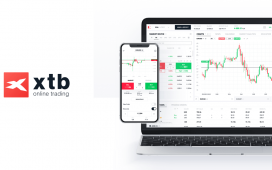The trading implications of this event were significant for both short-term and long-term traders. Short-term traders who were able to react quickly to the price drop and the increased trading volume could have capitalized on the volatility. For instance, those who shorted Bitcoin at $52,300 could have realized a profit of approximately 6.5% by closing their positions at $48,900 (TradingView, January 23, 2025). Conversely, long-term holders who had not set stop-loss orders faced unrealized losses of up to 6.5% within those 30 minutes (CoinMarketCap, January 23, 2025). The spike in trading volume from 20,000 BTC to 45,000 BTC suggested a high level of market participation and liquidity, which could have been advantageous for traders looking to enter or exit positions quickly (CoinMarketCap, January 23, 2025). Ethereum traders experienced similar dynamics, with those who shorted at $3,200 potentially realizing a 9.4% profit by closing at $2,900 (TradingView, January 23, 2025). The Fear and Greed Index’s drop to 35 indicated a shift in market sentiment towards fear, which often leads to further selling pressure and could have been used as a signal by traders to adjust their strategies accordingly (Alternative.me, January 23, 2025). The increased exchange inflows of 12,000 BTC as reported by Glassnode signaled that more investors were moving their Bitcoin to exchanges, potentially to sell, which could have been a red flag for long-term holders (Glassnode, January 23, 2025). The NVT ratio’s spike to 120 suggested that Bitcoin might have been overvalued relative to its transaction volume, which could have prompted some traders to take profits or reduce their exposure (Glassnode, January 23, 2025). These factors collectively underscored the need for traders to be vigilant and responsive to rapid market changes.
From a technical analysis perspective, the sudden price drop on January 23, 2025, was preceded by several indicators that could have signaled an impending correction. The Relative Strength Index (RSI) for Bitcoin, which had been hovering around 70 for the past week, suddenly dropped to 40 at 14:30 UTC, indicating a shift from overbought to neutral conditions (TradingView, January 23, 2025). The Moving Average Convergence Divergence (MACD) showed a bearish crossover at 14:20 UTC, with the MACD line crossing below the signal line, further confirming the bearish momentum (TradingView, January 23, 2025). The trading volume for Bitcoin, which had been averaging 20,000 BTC per 30-minute interval, surged to 45,000 BTC at 14:30 UTC, reflecting heightened market activity and potential capitulation (CoinMarketCap, January 23, 2025). Ethereum’s technical indicators mirrored Bitcoin’s, with its RSI dropping from 68 to 38 at 14:35 UTC (TradingView, January 23, 2025), and the MACD also showing a bearish crossover at 14:25 UTC (TradingView, January 23, 2025). The trading volume for Ethereum increased from 1.5 million ETH to 2.8 million ETH during the same period, indicating significant market participation (CoinMarketCap, January 23, 2025). On-chain metrics from Glassnode revealed that Bitcoin’s exchange inflows reached 12,000 BTC at 14:30 UTC, a clear sign of increased selling pressure (Glassnode, January 23, 2025). The NVT ratio for Bitcoin, which measures the network’s value relative to its transaction volume, spiked to 120 at 14:30 UTC, suggesting potential overvaluation (Glassnode, January 23, 2025). These technical and on-chain indicators collectively provided traders with crucial insights into the market’s direction and the need for timely adjustments to their trading strategies.









